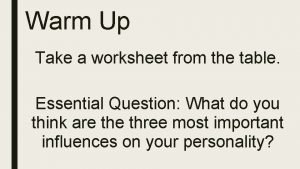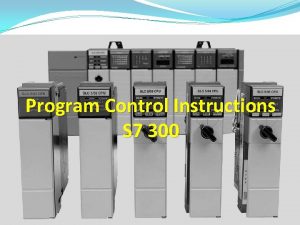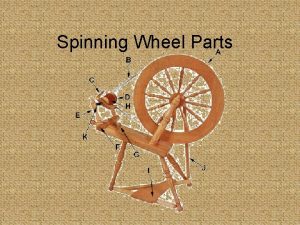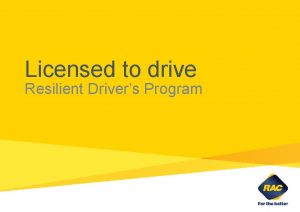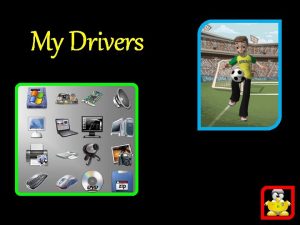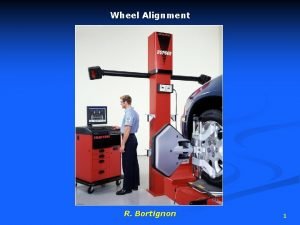Taking the wheel Resilient Drivers Program Instructions This































- Slides: 31

Taking the wheel Resilient Driver’s Program

Instructions. This workshop is designed to be teacher-led. You can print off this presentation in ‘notes format’ to assist with the delivery of the workshop – the suggested script is included. An activity sheet can be printed off for students to complete during or after the presentation is delivered.

. y a d o t t a g in k o lo What we’re The licensing system ent Practical driving assessm Hazard perception test

. s p e t s e s n e c li s Driver 6. ‘P’ Plates Minimum age, 17 years 1. Learner’s Permit Theory test – multiple choice Minimum age, 16 years 5. Practical Driving Assessment (PDA) – practical driving test at a licensing centre at a minimum of 17 years old. 4. Learner Phase 2 completion of second half of log book with a minimum of 25 hours 2. Learner Phase 1 completion of first half of log book with a minimum of 25 hours 3. Hazard Perception Test – computerised test completed at a licensing centre. 5 hours of night driving must be included with completed 50 hours logged

. m e t s y s g in s n e c li e Th 16 yrs (min) L 16½ yrs (min) 25 hours in log book (min 6 months) Learner theory test 17 yrs (min) L 25 hours in log book Hazard perception test P P 6 months 18 months Practical driving assessment 19 yrs (min)

. r e b m e r o t s t in Po Lear. Pneplr at drer iver Max km/h Max 110 100 km/h 0% BAC No driving betweenin 12 -5 am on red P’s Not allowed Kings Park Allowed on Freeways P L P

The log book.

. p e t s y b p e t s g Learnin P 6. Build on experience 5. Practising manoeuvres 4. Developing hazard perception skills 3. Learning basic techniques 2. Moving off and changing gears L 1. Understanding car controls

. t n e m s s e s s a g in iv r Practical d

. d in h e b g in h t e m Left so Where are you NOT allowed to do a U Turn? Turning around to go back by: Completing Usinga aroundabout 3 driveway point turn Completing a U-turn

. g in p p o h s r o f p o St Turning around to go back by: Parking in a car bay next to another vehicle

Free resources. Department of Transport


Question 1. How far should you drive behind a vehicle? . a) at least 2 seconds b) at least 5 seconds c) about 3 car lengths

Question 2. How long must you indicate before turning? . a) at least 70 metres before the turn b) long enough to give enough warning to other road users c) you don’t need to indicate

Question 3. Which of these statements is correct? . a) ornaments hanging from the rear view mirror will stop you from becoming fatigued when driving b) sunglasses worn at night will reduce the glare from the headlights c) night of on-coming vehicles you should have a clear windscreen and clean headlights at

Question 4. What must you do before pulling out from a curb? . a) sound your horn b) check your mirrors, blind spot and indicate for at least 5 seconds c) adjust your passenger-side external mirror

Getting ready. Practical Driving Assessment (PD A) - Practice in all weather conditions including sunset - Practice driving around trucks - Practice merging and driving on freeway - Practice driving in peak hour traffic - Practice driving on regional open roads - Practice driving in the area you will set your assessment The more logged hours of driving practice in the 1 st phase, the more confident you will be throughout your assessment.

Getting ready. (PDA) - Don’t tell your friends the test date - Take the test at the right time - Book the test for early in the day - Do a mock test

The day before. (PDA) - Practice in your head - Get a good night’s sleep

The day of. (PDA) - Take your Learner’s Permit with you - Arrive early - Don’t worry when there is silence in the car - You do not need to be perfect

The PDA. Common test mistakes What is a blind spot? - Not keeping up with the traffic flow - Hitting the curb when parking - Not indicating for long enough - Driving too slow - Not checking your blind spot and mirrors

The PDA. Automatic failure - Speeding - Disobeying a road sign or traffic regulation - The assessor takes control of the vehicle - Nearly causing a crash - Driving without wearing your seat belt

. il a f a h it w g in p Co Listen to the assessor’s feedback kness Practice the areas of wea Book in another test

. t s e T n io t p e c r e P Hazard For each scene you will be given one of the following driving tasks: - Slow down - Overtake - Make your turn - Move off

http: //www. transport. wa. gov. au/licensing/haz ard-perception-test-simulator. asp

Overtaking. Is it legal for the car to overtake in each of these diagrams? Yes Broken White Lines No Solid White Lines Yes When it is safe to do so

Overtaking. 6 key steps 1. Get a good view of the road ahead 2. Look behind and to the side of you 3. Signal before you overtake 4. Look AGAIN behind and to the side of you 5. Keep to the speed limit while overtaking 6. Move back into line

. e c n e c li r u o y g Keepin Traffic offences Penalties for traffic offences include: - Fines - Demerit points - Loss of licence - Imprisonment Demerit points stay on your record for 3 years.

Demerit points. Graduated system L L P P 6 months 4 Demerit Points 8 Demerit Points 12 months

In summary. Get as much practice as possible Persevere!
 Chapter 74 ase questions
Chapter 74 ase questions Tire wheel and wheel bearing fundamentals
Tire wheel and wheel bearing fundamentals Stop motion screw function
Stop motion screw function Feature vectors
Feature vectors Resiliency
Resiliency Pnt gnss
Pnt gnss Resilient attitude
Resilient attitude Great oiled resilient striding legs analysis
Great oiled resilient striding legs analysis How can you be resilient
How can you be resilient How can more resilient
How can more resilient How can more resilient
How can more resilient Marginal gingiva
Marginal gingiva How can be more resilient
How can be more resilient Torpedo traffic generator
Torpedo traffic generator Resilient network design
Resilient network design Token ring and resilient packet ring
Token ring and resilient packet ring Resilient distributed datasets
Resilient distributed datasets Cloud resiliency orchestration
Cloud resiliency orchestration Redundant path
Redundant path Cisco service nagle
Cisco service nagle Resilient temperament definition
Resilient temperament definition Resilient distributed datasets
Resilient distributed datasets Rssh health
Rssh health David korowicz
David korowicz Sharon milgram nih
Sharon milgram nih Program control instructions
Program control instructions Hình ảnh bộ gõ cơ thể búng tay
Hình ảnh bộ gõ cơ thể búng tay Slidetodoc
Slidetodoc Bổ thể
Bổ thể Tỉ lệ cơ thể trẻ em
Tỉ lệ cơ thể trẻ em Gấu đi như thế nào
Gấu đi như thế nào Glasgow thang điểm
Glasgow thang điểm








